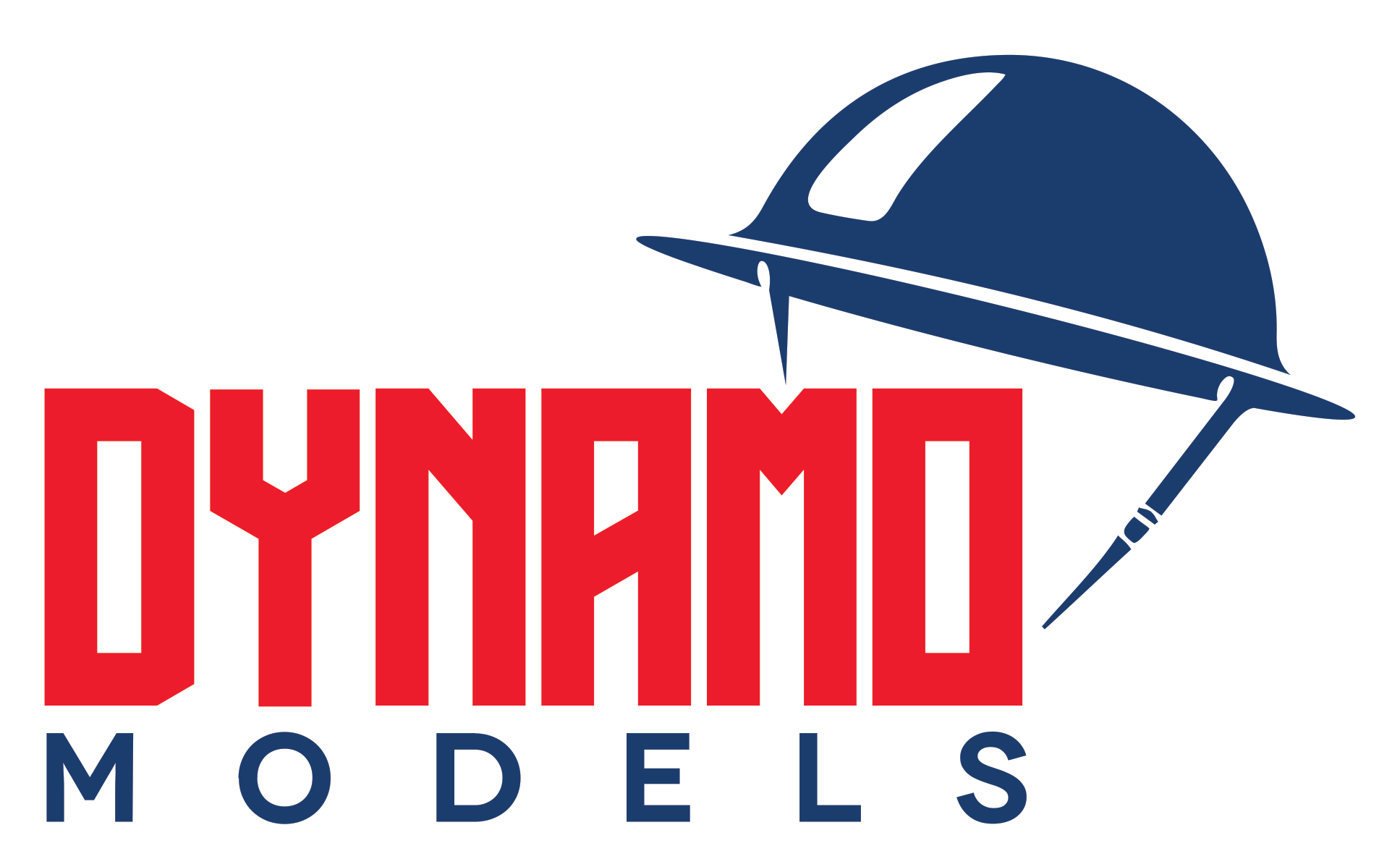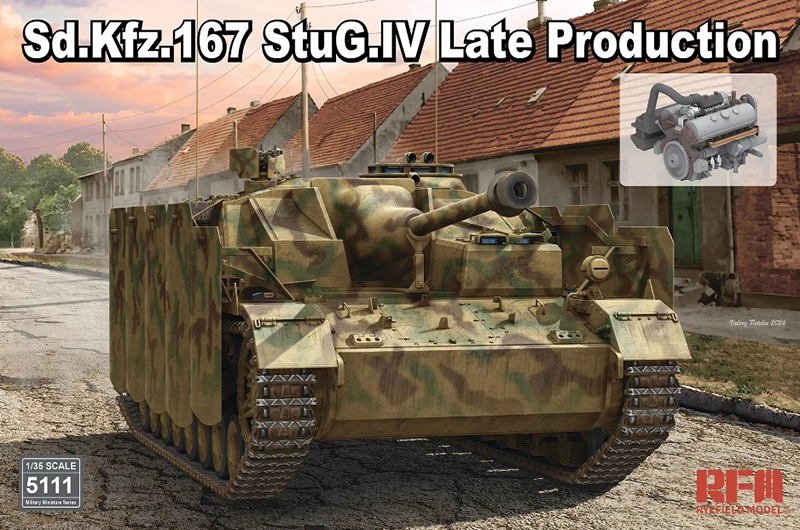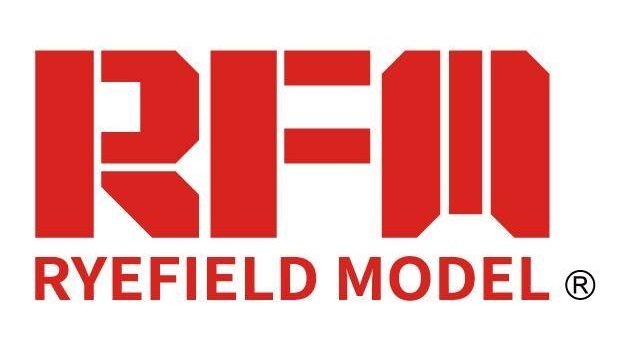Rye Field Model 5111 – Sd.Kfz.167 Stug IV Late Production
52,50€
– Plastic model kit to build a Sd.Kfz.167 Stug IV Late Production 1/35 by Rye Field Model.
– Scale plastic kit include photo-etch, clear parts and decals.
– Model to be assembled and painted. Glue and paint not supplied.
2 en stock
The Rye Field Model 5111 Sd.Kfz.167 Stug IV is a 1/35 scale model kit of the German Sturmgeschütz IV (StuG IV), a WWII assault gun built on the Panzer IV chassis and designed for infantry support and anti-tank roles. Known for its low profile and effective 7.5cm StuK 40 L/48 gun, the StuG IV played a significant role on both the Eastern and Western fronts, providing fire support and engaging enemy armor. Rye Field Model captures this vehicle with impressive detail, offering historical accuracy, high-quality parts, and realistic features that make it an ideal kit for modelers interested in WWII German armor.
Key Features:
- Scale: 1/35, allowing detailed parts and compatibility with other WWII armor kits, making it ideal for dioramas and collections.
- Detailed 7.5cm StuK 40 L/48 Main Gun: The kit includes a highly detailed representation of the StuG IV’s main gun, complete with recoil system details, gun breech, and optional barrel elevation. The mantlet is also carefully molded to match the historical specifications.
- Accurate Cast Hull and Weld Seams: The cast hull and superstructure are textured to replicate the look of rolled steel, with precise weld seams, bolts, and rivets, capturing the StuG IV’s robust, rugged appearance.
- Photo-Etched (PE) Parts: Includes PE parts for delicate elements like engine grilles, side skirt armor, and tool brackets, enhancing the model’s scale accuracy and detailing.
- Side Skirts (Schürzen) with Optional Mounting: The kit provides optional side skirts (Schürzen) that can be added for extra armor protection or left off for a field-worn appearance. The side skirts come in individual plates, allowing flexibility in positioning or simulating battle damage.
- Detailed Suspension and Track Links: Rye Field Model includes individual track links that add realism, particularly when positioned with natural sag. The suspension system is detailed, with realistic road wheels, return rollers, and torsion bars that reflect the StuG IV’s actual undercarriage.
- Optional Open or Closed Hatches: The hatches can be modeled in open or closed positions, providing flexibility for display options and allowing room for interior detailing or crew figures.
- Clear Parts for Optics and Periscopes: Clear plastic parts are provided for the gunner’s sighting optics, periscopes, and other visual ports, adding to the authenticity and giving the model a lifelike finish.
- Various Stowage and Accessories: The kit includes additional stowage options like jerry cans, extra track links, spare road wheels, and tools, allowing for customization and an “in-the-field” look.
- Accurate Zimmerit Coating Options: The kit accurately replicates the Zimmerit anti-magnetic coating commonly applied to German armor. The textured Zimmerit detail adds a historical touch, enhancing the realism of the model.
- Multiple Marking and Decal Options: Decals are provided for several units, allowing customization for different fronts and specific units that used the StuG IV.
- Detailed Instruction Manual: The instruction manual provides clear assembly steps with detailed diagrams and painting guides, making the process easier and more intuitive.
The Rye Field Model 5111 Sd.Kfz.167 StuG IV is a meticulously crafted kit that captures the unique design and battlefield role of this iconic German assault gun. With its rich details, customization options, and realistic features, this model is ideal for modelers who appreciate historical accuracy and the distinctive look of German WWII armor.
Sd.Kfz.167 Stug IV:
The Sd.Kfz.167 StuG IV (Sturmgeschütz IV) was a German assault gun introduced in 1943, combining the successful design elements of the StuG III and the chassis of the Panzer IV tank. Created to provide infantry support and serve as a tank destroyer, the StuG IV was developed out of necessity when the German armored forces suffered significant tank losses and production facilities were disrupted by Allied bombings. Its versatility and effective firepower made it a valuable asset for the Wehrmacht, particularly in the defensive battles that characterized the later stages of World War II.
Design and Armament
The StuG IV’s design stemmed from the StuG III assault gun, with a similar low-profile, casemate structure. This profile offered a smaller target, making it harder for enemies to detect and hit. The primary weapon was the 7.5 cm StuK 40 L/48 gun, which was mounted in a fixed superstructure instead of a rotating turret. The L/48 gun was effective against Allied medium tanks at standard engagement ranges and also excelled at providing indirect support to infantry by firing high-explosive rounds against fortified positions. The lack of a turret simplified production and made the vehicle cheaper to build, although it required the entire tank to pivot to aim horizontally, limiting its versatility in dynamic combat situations.
In addition to its main armament, the StuG IV was equipped with a 7.92 mm MG 34 machine gun, often mounted on the roof, to defend against infantry attacks. Some crews improvised additional protection, such as sandbags and logs, to bolster the vehicle’s defense, as it was vulnerable to infantry with anti-tank weapons in close-quarters combat.
Armor and Mobility
The StuG IV used the Panzer IV chassis, making it easier to produce in factories that were already producing Panzer IV components. The vehicle was protected by 80 mm of frontal armor, angled to increase its effective thickness and deflect incoming rounds. The side and rear armor were thinner, around 30 mm, making it vulnerable from the sides and rear, especially to anti-tank rifles and artillery fire.
The Panzer IV chassis provided reliable mobility, and while slower than some dedicated tank destroyers, it was relatively maneuverable with a top speed of around 38 km/h (24 mph). This mobility was sufficient for defensive roles and supporting infantry advances, allowing it to keep pace with infantry while being more fuel-efficient than larger tanks.
Operational Role and Impact
The StuG IV became an important part of German armored units, especially as a tank destroyer and defensive vehicle. Its low silhouette made it effective for ambushes, a key tactic as the German army increasingly fought defensive battles on both the Eastern and Western fronts. The StuG IV was cheaper to produce and required less maintenance than fully turreted tanks, making it a practical solution for Germany’s tank shortages.
In total, around 1,100 StuG IVs were produced. It became an effective weapon in the Wehrmacht’s strategy, excelling in defensive roles and contributing to a cost-effective armored fighting force. The Sd.Kfz.167 Stug IV is remembered for its practicality, effectiveness as an anti-tank weapon, and significance as a low-cost solution in the German arsenal during WWII.
| Poids | 0,8 kg |
|---|---|
| Brand | |
| Country |
Germany |
| Material |
Plastic |
| Period |
WW2 |
| Scale |


